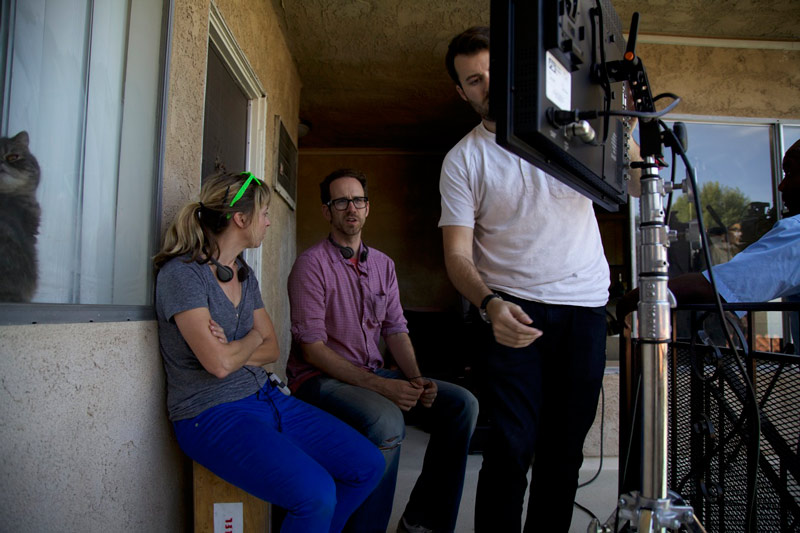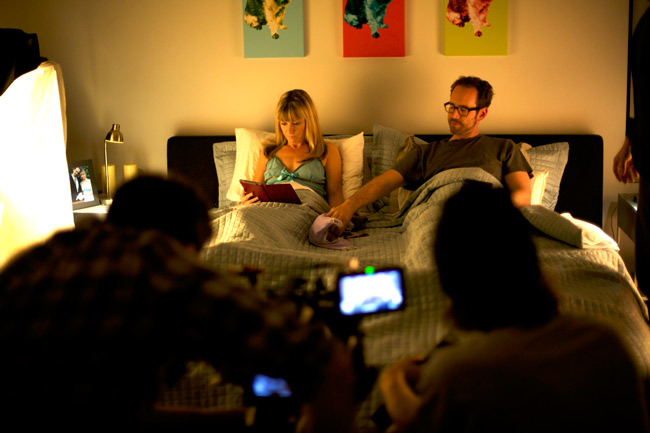Writing, acting, and directing your own film is something I would only advise a masochist to take on. The only reason I attempted to do this was my co-director Kasi Brown (pronounced “Casey”) and I knew that we had each other to pick up the slack. We’d shot a bunch of sketches and had both worked on films for many years. We knew a feature length film would be vastly different, but we felt brave enough to try. We’ve always shared a creative shorthand with one another, where one of us thinks something, we lock eyes and the other says “that’s perfect! Let’s do it!” So we set forth with making Gone Doggy Gone, and we weren’t going to let anyone tell us we couldn’t do it. Here are a few examples to help future writer/actor/directors avoid mistakes we made.

USING THE CREW WHEN YOU CAN’T BE BEHIND THE MONITOR
If you think the camera crew or DP can be your eyes as a director think again. They’re doing their job. How are they supposed to do your job as well? Were this a short film or sketch, then maybe it could happen, but not on a feature so it’s best to just let this idea go.
When we weren’t in scenes, we were behind the monitors making sure the shot was ever so right. First we’d check the frame, then run over and act. So many times something would come up with lighting, or a lens change would happen at the last minute and the shot would be slightly re-framed. Since we had our acting hats on, we neglected to run back and check frame. Stupid us. The shot, which had a joke in the frame, didn’t register anymore. It was our fault because we didn’t switch hats and double check. This kind of thing happens all the time when you’re overextending yourself on set.

THE ACTING ROLES YOU PLAY
Kasi and I played husband and wife and were in nearly every scene together. Stupid us, again. If we’d played different roles then one of us could have been directing while the other acted. This would have made things much smoother. But if you have to do this and can’t be told otherwise, make sure your directing partner is an awesome actor. I was very fortunate to work with Kasi who is “all balls”. She doesn’t know the meaning of half-measures. Her acting brought everyone else’s up a notch. Thank God for her years of acting experience and helping me out when the proverbial celluloid sh*t hit the fan. She was the calm in the center of the hurricane.
THREE TAKE SCENES IF WE WERE LUCKY
Many times we’d set up a shot and only have 3 takes from one angle if we were lucky. When we’d look back at the footage and see there was only 1 take of something, we were horrified. “Are you kidding me? That’s all we got? Oh, yeah… we had an 8 page day with 50 setups, stunts and dogs!” Don’t do this to yourself! You’ve really got to break down the shots of every scene before hand so much that you’ve either got them storyboarded or written out extensively so they can easily be communicated. Although, we did this we could have done it in even greater detail. Plan your shots out like its D-Day. Eisenhower took a full year to prepare that invasion. He took his time, and planned, and planned, and planned some more, and made plans for failed plans, and planned for different plans. That’s the kind of attention to detail you need when you make a movie for $100 or a million dollars.
I hope I’ve conveyed to you why you shouldn’t write/direct/act in your own film or at least some pitfalls to avoid. We were a bit foolish in some aspects, but I’m glad to be a fool and have a finished feature film, than having a script I’m trying to get made.